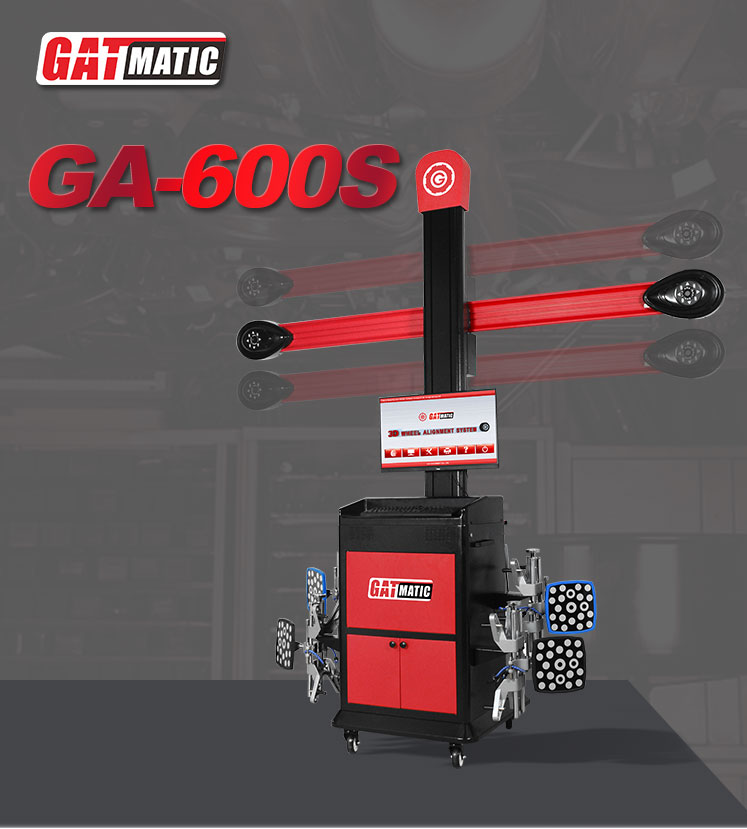Choosing the Right 3D Wheel Alignment Equipment for Your Auto Shop.
In the intricate web of automotive maintenance, wheel alignment stands as a critical aspect, ensuring optimal vehicle performance and longevity. The advent of 3D wheel alignment technology has revolutionized this practice, offering advantages over traditional 2D systems. This essay explores the crucial process of selecting the right 3D wheel alignment equipment for auto shops, emphasizing the importance of precision and compatibility.
I. Understanding 3D Wheel Alignment
3D wheel alignment technology represents a leap forward in accuracy and efficiency. Unlike its 2D counterpart, this technology considers three-dimensional aspects, providing a comprehensive assessment of wheel positions. Key components include advanced sensors and cameras, allowing for a detailed analysis of camber, caster, and toe angles. The superiority of 3D systems lies in their ability to capture a holistic view of the vehicle’s alignment, contributing to improved handling and tire longevity.
II. Assessing Your Auto Shop’s Needs
Before investing in 3D wheel alignment equipment, auto shop owners must assess their specific needs. Factors such as the volume of wheel alignment services, the variety of vehicles serviced, and the available space in the shop play pivotal roles. Understanding these requirements ensures a tailored selection that aligns with the shop’s operational demands.
III. Key Considerations in Choosing 3D Wheel Alignment Equipment
The selection process involves careful consideration of several factors. Accuracy and precision are paramount, as they directly impact the effectiveness of alignment services. Compatibility with diverse vehicle makes and models ensures versatility, while user-friendly interfaces and efficient operation contribute to the overall productivity of the auto shop. Advanced software capabilities for diagnostics and reporting streamline the alignment process, enhancing the overall customer experience.
IV. Budget Considerations
While the benefits of 3D wheel alignment technology are substantial, it is essential to weigh the associated costs. The initial investment, long-term maintenance expenses, and calibration costs should be considered. A comprehensive analysis of the return on investment (ROI) helps in determining the economic viability of the chosen equipment.
V. Brand and Supplier Evaluation
Choosing a reputable brand is crucial in ensuring the reliability of the 3D wheel alignment equipment. Researching customer reviews, testimonials, and evaluating warranty and after-sales support contribute to a well-informed decision. A strong partnership with a reliable supplier is vital for ongoing success and the longevity of the equipment.
VI. Training and Support
The implementation of 3D wheel alignment technology necessitates adequate training for technicians. Access to comprehensive training programs, customer support, and technical assistance ensures the smooth integration of the equipment into daily operations. Online resources and documentation provided by the supplier further contribute to the proficiency of the auto shop team.
VII. Future-Proofing Your Investment
To safeguard the investment, auto shop owners must consider the scalability and upgradability of the chosen equipment. The equipment should be adaptable to future expansion plans and capable of integrating with emerging industry standards. Future-proofing the investment ensures that the auto shop remains competitive and equipped to meet evolving technological demands.
VIII. Case Studies or Success Stories
Examining case studies or success stories from auto shops that have successfully implemented 3D wheel alignment equipment provides valuable insights. Learning from the experiences of others helps in identifying best practices and potential challenges, contributing to a smoother integration process.
Conclusion
In conclusion, choosing the right 3D wheel alignment equipment is a strategic decision that significantly influences the efficiency and success of an auto shop. By understanding the technology, assessing specific needs, considering key factors, and prioritizing ongoing support and training, auto shop owners can make informed choices that positively impact their businesses. Embracing 3D wheel alignment technology is not just an upgrade; it’s an investment in the future of automotive maintenance.
FAQs
1. What is 3D wheel alignment, and how does it differ from traditional 2D systems?
3D wheel alignment is a technology that considers three-dimensional aspects of a vehicle’s wheel positions during alignment. Unlike traditional 2D systems, 3D alignment provides a more comprehensive analysis, taking into account camber, caster, and toe angles for improved accuracy.
2. Why is 3D wheel alignment considered superior, and what are its key advantages?
3D wheel alignment is superior due to its ability to capture a holistic view of a vehicle’s alignment, leading to improved handling and tire longevity. Key advantages include enhanced accuracy, efficiency, and the ability to analyze multiple alignment parameters simultaneously.
3. How should I assess my auto shop’s needs before investing in 3D wheel alignment equipment?
Consider factors such as the volume of wheel alignment services, the types of vehicles serviced, and the available space in your auto shop. Understanding these needs ensures that the selected equipment aligns with your shop’s operational requirements.
4. What are the key considerations when choosing 3D wheel alignment equipment?
Considerations include the accuracy and precision of the equipment, compatibility with various vehicle makes and models, ease of use, speed and efficiency, software capabilities for diagnostics and reporting, and integration with other auto shop management systems.
5. What budget considerations should be taken into account when investing in 3D wheel alignment equipment?
Evaluate the initial investment costs, long-term maintenance expenses, and calibration costs. Additionally, analyze the potential return on investment (ROI) to determine the economic viability of the chosen equipment.
Describe Your Needs In Detail!
We will carefully evaluate your needs and give professional solutions.



